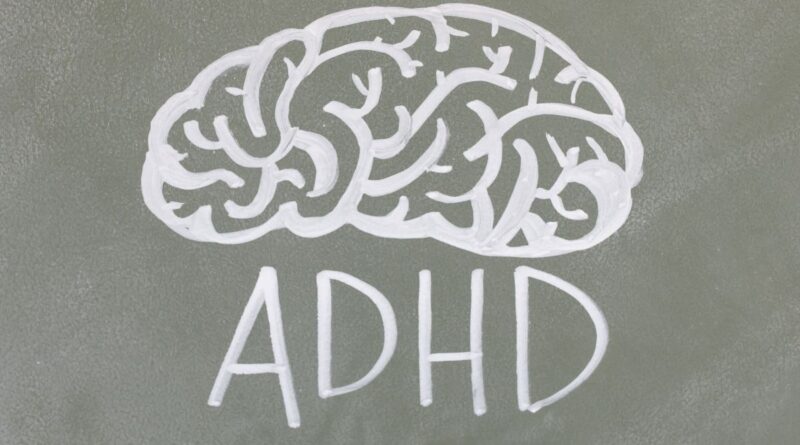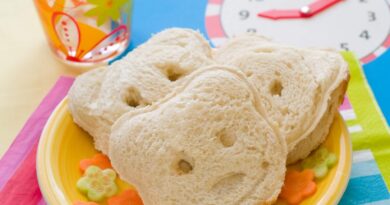How to help your ADHD picky eating child accept more foods
Experts widely recognise ADHD as a neurodevelopmental condition, and it’s often accompanied by picky eating.
It’s a relatively new link so there isn’t a huge amount of scientific research yet, but I’ll let you know what we do know and what we suspect when it comes to eating behaviour and ADHD.
I’ll also explore the connection between diet, certain nutrients and severity of the negative traits associated with ADHD.
This blog contains affiliate links

What is the link between ADHD picky eating and kids?
Children with ADHD are often more selective about the foods they eat.
This can be due to a variety of factors, including anxiety and sensory issues which can lead to a preference for certain types of foods.
Additionally, the impulsivity and hyperactivity associated with ADHD can make mealtimes more challenging. And inattention is linked to increased fussiness.
Is picky eating in common in children with ADHD?
Yes, picky eating is quite common in children with ADHD. Studies show that children with ADHD tend to be pickier eaters than their peers.

Are food aversions common in children with ADHD?
Food aversions aren’t unheard of in children with ADHD.
The sensory characteristics of the food usually cause aversions. Children reject foods based on how it looks, smells, taste, texture, or even its colour.
There is usually an underlying cause for food aversion, and some children may not grow out of it; those children need specialist feeding therapy.
Are sensory issues common in children with ADHD?
They can be. Many children with ADHD have sensory processing differences.
We all have sensory preferences, but some children process the world around them in a more extreme way.
Sensory hypersensitivity (heightened) means children have an unusually high response to sensory experiences and hyposensitivity (low) means children have unusually low responses to sensory experiences.
Children integrate all their senses at the same time ONLY when they eat.
Believe it or not, there are 8 (not 5) senses involved in eating.

How is sensory processing linked to picky eating?
Because eating involves using all of our senses at once, if children find food is too smelly or looks strange or feels too hot or too cold, or sounds weird as they chew, it can be very off putting and sometimes very uncomfortable for them.
You can appreciate how this can result loss of appetite.
For example if your child is hypersensitive to sound, they might struggle to eat in a noisy school dining hall.
Likewise if they have visual sensory hypersensitivity, they may find a plate with lots of different foods overwhelming.
Children who don’t like seams on their socks, labels in their clothes or describe food as being too crunchy, too spicy, too cold, may have sensory differences that affect their eating.

Are children with ADHD likely to be underweight?
Hyperactive children (often described as ‘always on the go’) expend more energy than neuro-typical kids.
If they don’t consume extra food to fuel this activity they can become underweight.
Do children with ADHD become overweight?
ADHD kids who are more geared towards inattention are more likely to carry extra weight.
There is a link between ADHD and obesity. Researchers believe genetics may causes it.
But children with ADHD can also gain weight because of:
- poor sleep patterns,
- poor impulse control (they just can’t resist),
- overeating to compensate for low mood (emotional eating),
- fussy eating because they will only eat certain foods and
- lack of interoception – one of the 8 senses that tells the body when they are full.
Older kids with ADHD may want to eat healthily and follow an exercise routine but struggle with executive functioning like planning, starting and sticking to routines, which is why extra parental support can be very helpful.

Is it true that children with ADHD crave sugar?
There isn’t much research on the relationship between sugar and ADHD but there are some biological facts that make this question make sense.
Researchers believe that children with ADHD have less of the brain chemical dopamine than children without ADHD.
We also know that when a person eats sugar, the amount of dopamine in their brain rises.
This has led to the suggestion that children with ADHD crave sugar in order to increase their dopamine levels. This is just theory. Scientists have not proven it.
Sugar may affect the behaviour of a child with ADHD (but it also may not!) the evidence is still not there for us to say either way.
If you think your child’s behaviour is more problematic after they have eaten sugar, then a safe way to test the theory is by removing sugar from their diet for a few weeks to see if their ADHD improves.

Can picky eating make signs of ADHD more challenging?
Yes! What children eat can affect their mood, irritability, attention, anxiety levels and hyperactivity whether they have ADHD or not.
If your child with ADHD isn’t getting a balanced diet with a full range of nutrients, you may find that their negative characteristics are worse. It’s worth working with a specialist paediatric dietitian to improve your child’s diet if you feel they aren’t getting the nutrient rich diet they need.
Having family meals with a child with ADHD (whether they’re a picky eater or not) can be really challenging.
Children may become more disruptive when presented with new foods or less preferred foods. This is because anxiety levels have risen triggering the fight, flight or freeze adrenaline response.
When the adrenaline response kicks in, it’s in our biology to switch off appetite and therefore mealtime is over.

Should children with ADHD be getting specific nutrients in their diet?
Children with ADHD, (like all children) need a variety of foods in order to meet their nutritional needs.
Easier said than done right?
Therefore some children with ADHD may benefit from a daily multivitamin/mineral supplement to make sure they’re getting the full range of nutrition while eyou work on increasing their accepted foods.
There are a few key nutrients that are beneficial in ADHD, so we recommend that you should target foods containing those first:

Omega 3 fats in children with ADHD
Children who consume omega 3 have improved behaviour and attention. There is research linking these to children with ADHD and improvement of their hyperactive and inattentive traits.
The impact is even greater when the jumping off point of dietary omega-3 is very low.
There is no official number of grams of omega 3 for children with ADHD but it’s very safe to introduce omega-3 containing foods if you want to try.
Omega 3 rich foods are:
- Oily fish such as salmon, trout, mackerel, herring, sardines and anchovies
- Eggs that are fortified with omega-3 (check the brand)
- Chia seeds, flax seeds, hemp seeds and walnuts
- Edamame and tofu
- Rapeseed oil
If children don’t readily accept these foods, you can try an omega-3 supplement. However, it’s possible to have too much since they work best in balance with other fats.
Contact us if you need advice on what’s best.

Vitamin D in ADHD
Vitamin D may help to improve attention levels in children with ADHD, particularly if they are deficient, which a large proportion of children unknowingly are.
Skin exposure to the sun provides Vitamin D, but many children in northern hemispheres don’t get enough due to the use of sunscreen. In the UK, experts recommend that children take a daily supplement containing 10 mcg of vitamin D.

Is protein important for ADHD at breakfast?
Protein might be particularly beneficial for children with ADHD. It can help stabilise blood sugar levels by slowing the digestion of carbohydrates into sugars, which can help manage ADHD characteristics.
There’s some research that showed children with hyperactivity who ate a high protein breakfast scored better on attention tests than those fed a high carbohydrate breakfast.
Instead of grabbing a bowl of cereal or slice of toast, try to include protein foods, like eggs, beans, Greek or Skyr yoghurt, cheese, nuts, seeds, or even leftover cold meats in your child’s breakfast every day.

Is the keto diet recommended for children with ADHD?
The ketogenic (keto) diet is a high-fat, low-carb diet that’s been studied for its potential benefits for neurological conditions.
However, there’s limited research on its effectiveness for ADHD, and the diet can be really difficult to follow.
It may also lead to nutrient deficiencies unless it is being closely monitored by a dietitian.
Therefore it’s not one to try yourself at home. When we do keto diets with children we do them in hospital as they need very regular blood tests to make sure that the chemicals in their body stay balanced.

Should children with ADHD be avoiding certain foods in their diets?
There are a few things to consider about the food (and drinks) you offer your child with ADHD:
E-numbers
Some E-numbers have been linked to increased hyperactivity in children.
An e-number is a food additive that is allocated a unique code once it’s been through testing and known to be safe to use in food.
The E stands for Europe and so in the US they don’t appear on food packaging.
The following list of e-numbers are all colourings that have been linked to hyperactivity in children. If you think your child has increased hyperactivity after eating or drinking foods with these in consider removing these from their diet:
- E102 (tartrazine)
- E104 (quinoline yellow)
- E110 (sunset yellow FCF)
- E122 (carmoisine)
- E124 (ponceau 4R)
- E129 (allura red)

Caffeine
Some might consider this obvious, but given the popularity of caffeine-containing energy drinks among children, it’s still worth mentioning!
Caffeine affects sleep, anxiety levels, and behaviour in children with short-term use, and it can cause more severe complications, such as heart problems, with long-term consumption.
The recommended safe level of caffeine in children is no more than 3mg per kg of bodyweight.
This means for the average 5 year old their maximum intake of caffeine should be no greater than 54mg and for the average 12 year old their maximum intake of caffeine should be no greater than 130mg.
Here is a list of caffeine containing foods and their average portion size so that you have an idea of consumption:
| Food or drink | Portion size | mg caffeine per portion |
| Chocolate milkshake | 300ml | 6mg |
| Hot chocolate | 300ml | 17mg |
| Milk chocolate | 45g | 9mg |
| Dark chocolate | 45g | 30mg |
| Energy drink | 500ml | 150mg |
| Cola | 330ml | 35-45mg |
| Mountain Dew | 330ml | 55mg |
| Cup of tea | 190ml | 26mg |
| Instant coffee | 300ml | 75ml |
| Filter coffee | 300ml | 120-140mg |

What’s the link between ADHD and gut health?
Some new research suggests a link between ADHD and poor gut health.
If the healthy bacteria in the gut is out of balance, this might make a young person more susceptible to having ADHD.
Research hasn’t reached the point where we can say rebalancing gut bacteria could cure or prevent ADHD. However, it’s very safe to try offering probiotic food or supplements at home to see if they improve your child’s ADHD traits.
Probiotics are healthy bacteria found naturally in fermented foods such as:
- Yoghurt with live active cultures
- Kefir – a fermented milk drink
- Kombucha – a fermented tea drink
- Sauerkraut – a fermented cabbage
They have a sour taste and may be refused so often people prefer a supplement instead:
What you should know is that children’s diet needs to contain ‘prebiotics’ too which is the food that probiotics need in order to thrive. Prebiotics are found in over 35000 plant foods but some examples of foods high in prebiotics includes:
- Garlic
- Onion
- Leek
- Asparagus
- Banana
- Dried mango
- Dates
- Nectarines
- Almonds
- Chickpeas
- Pistachio nuts
- Watermelon

How to support your ADHD child and their picky eating
Here are a 10 foundational strategies that you’ll want to put in place before you can start to help your child with their picky eating:
- Set up a meal schedule that’s appropriate for their age – kids with ADHD often have trouble with executive functioning so knowing there’s a routine for eating can be very helpful for them.
- Make mealtimes pleasant without phones or screens, put on some music and engage them in conversation.
- Keep sweets, biscuits, chocolate and sweet drinks to a minimum and just at mealtimes. Children with ADHD often crave the sweet stuff and will consume it in between times which can impact upon appetite for meals.
- Pick your battles and decide whether or not you will cater to their food preferences. For example if your child will only eat whole crackers and not the broken ones, give them whole crackers.
- Link preferred foods with new foods. For example if your child loves ketchup, let them use it as a vehicle for trying green beans.
- Offer positive reinforcement such as a high five, a smile or a well done when your child shows interest in a new food.
- Never bribe or reward your child with a preferred food – like “you can have ice cream if you eat your broccoli”, this just makes the dessert even more desirable and the broccoli even more disgusting!
- Keep calm and be a good role model, eating the foods you want your child to eat.
- Don’t engage in food battles or conversation about eating performance, or whether they like food (or not) at the table.
- Exposure, exposure, exposure! Kids need to try a food 10 times before they can decide whether they like it or not, and trying involves actually putting it in their mouths and chewing it, most of us think 10 exposures is 10 offerings!

Why is it important to address picky eating early on?
The older a child gets, the harder it becomes to address their ADHD picky eating because they have many ingrained habits to unlearn.
You’ll may have had them eating the same meals on repeat for years. The longer they are selective about what food they will eat, the more likely they will develop nutritional deficiencies.
Typically, since professionals can’t diagnose ADHD in children under the age of 6 and often overlook it until the teenage years, you might have already faced challenging social situations where your child will only eat ‘their’ food or eat only at home.
Having said all that it’s not impossible to help them, they can become less picky with professional support and they’ll improve more quickly the sooner you tackle it.

What to do if your child has no interest in food
If your child has no interest in food, it’s important to consult with a healthcare provider.
Some medications that children with ADHD are prescribed can cause them to have low or no appetite which may appear as if they have no interest in food.
This along with the tummy pain and nausea that the medication can cause can also lead to loss of appetite.

Meal planning for children with ADHD
Meal planning can go a long way towards making sure that your child gets the nutritional variety they need in their diet.
The aim is to try to include foods from all 5 of the food groups at each meal. The 5 food groups are
- Proteins – meat, fish, beans, eggs, nuts and seeds.
- Carbohydrates – bread, crackers, rice, pasta, noodles, potatoes, cereals and grains.
- Fruit and vegetables – fresh, frozen, tinned or dried
- Dairy foods – milk, yoghurt, cheese and milky desserts
- Healthy fats – olive oil, olive spread, oily fish, avocado, nuts
Involving your child in the meal planning process can be very helpful to show them that you are accounting for their preferences.
Let them make some of the decisions over what goes on the menu such as asking if they would like pasta or rice with a meal or letting them choose the vegetables to go alongside a main dish.

Does diet improve ADHD?
We know that diet does not cause ADHD but we do know that diet is linked to behaviour in children.
There is enough evidence to make changes to the diets of children with ADHD to see if any unwanted ADHD characteristics improve.
When to seek professional help
While it’s normal for children, especially those with ADHD, to go through phases of picky eating, there are times when professional help may be necessary.
If your child with ADHD is underweight, has long-standing picky eating habits, eats fewer than 20 different foods, shows signs of nutritional deficiencies, struggles with appetite loss, or feels distressed at mealtimes, you should consult a healthcare professional like a paediatric specialist dietitian and feeding therapist now.

The post How to help your ADHD picky eating child accept more foods appeared first on The Children's Nutritionist.




